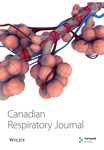Diagnosis and Management of Asthma in Preschoolers: A Canadian Thoracic Society and Canadian Paediatric Society Position Paper
Abstract
Asthma often starts before six years of age. However, there remains uncertainty as to when and how a preschool-age child with symptoms suggestive of asthma can be diagnosed with this condition. This delays treatment and contributes to both short- and long-term morbidity. Members of the Canadian Thoracic Society Asthma Clinical Assembly partnered with the Canadian Paediatric Society to develop a joint working group with the mandate to develop a position paper on the diagnosis and management of asthma in preschoolers.
In the absence of lung function tests, the diagnosis of asthma should be considered in children one to five years of age with frequent (≥8 days/month) asthma-like symptoms or recurrent (≥2) exacerbations (episodes with asthma-like signs). The diagnosis requires the objective document of signs or convincing parent-reported symptoms of airflow obstruction (improvement in these signs or symptoms with asthma therapy), and no clinical suspicion of an alternative diagnosis. The characteristic feature of airflow obstruction is wheezing, commonly accompanied by difficulty breathing and cough. Reversibility with asthma medications is defined as direct observation of improvement with short-acting ß2-agonists (SABA) (with or without oral corticosteroids) by a trained health care practitioner during an acute exacerbation (preferred method). However, in children with no wheezing (or other signs of airflow obstruction) on presentation, reversibility may be determined by convincing parental report of a symptomatic response to a three-month therapeutic trial of a medium dose of inhaled corticosteroids with as-needed SABA (alternative method), or as-needed SABA alone (weaker alternative method). The authors provide key messages regarding in whom to consider the diagnosis, terms to be abandoned, when to refer to an asthma specialist and the initial management strategy. Finally, dissemination plans and priority areas for research are identified.




